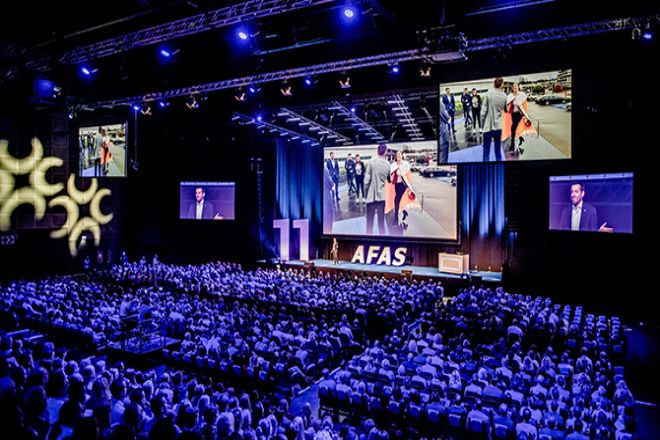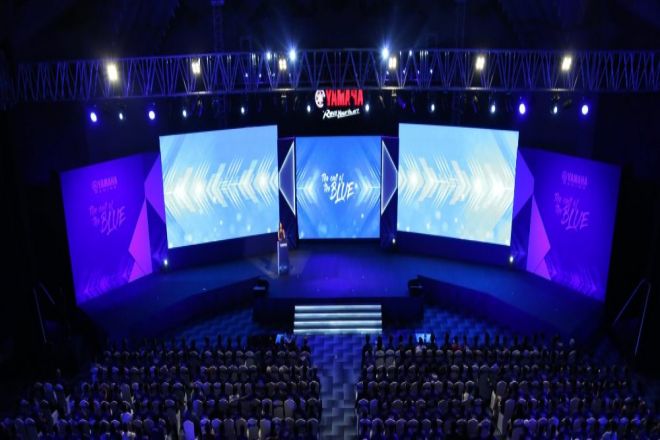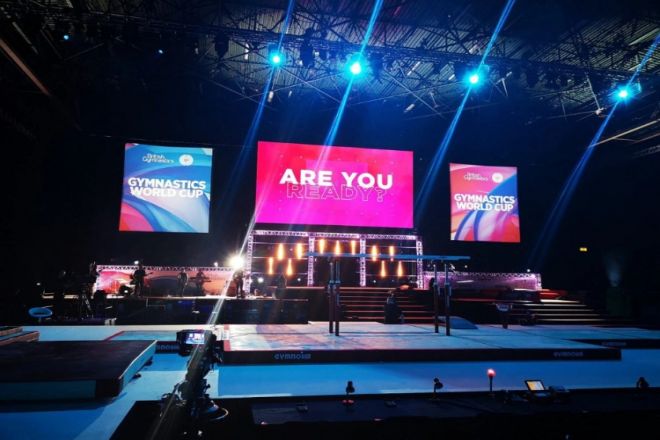Introduction

When the lights gradually dimmed, the LED display in the center of the stage slowly lit up. At that moment, it was not only a magician of light and shadow but also a catalyst of emotion. But have you ever thought about how to carefully select the most suitable LED display for that stage behind this dazzling brilliance? Faced with a wide range of choices on the market, how do you find the key to open the door to the visual feast among many parameters?
Let us embark on this exploration journey together to unveil the mystery of LED display selection.
1. Clarify the overall performance type and style
In the early stage of stage design, clarifying the type and style of the overall performance is the first step in choosing an LED display, and it is also the cornerstone of building the entire visual system.
This step is not only related to the physical characteristics and technical parameters of the LED display, but also directly affects the final visual effects and the emotional resonance of the audience.
1). Performance type analysis
- Concerts and music festivals:
These activities are centered on music, with a warm and dynamic atmosphere. When choosing an LED display, you need to pay attention to its high brightness, high refresh rate, and wide viewing angle to ensure that the audience can still clearly see every detail on the stage under strong light or at a long distance.
In addition, the size and number of screens should also be determined according to the size of the venue and the size of the audience to create a shocking visual effect and a strong sense of presence.
- Drama and dance performances:
Unlike concerts, drama and dance performances pay more attention to the delicate expression of emotions and the aesthetic pursuit of art.
Therefore, when choosing an LED display, in addition to considering the basic physical properties, it is also necessary to pay attention to its color reproduction and grayscale level to ensure that the light and shadow changes and color levels on the stage can be accurately presented.
In addition, special-shaped screens and customized designs are also common choices for such performances to better integrate into the stage setting and plot development.
- Corporate annual meetings and award ceremonies:
Such activities are often formal and solemn, and have high requirements for the integrity and aesthetics of the stage. When choosing an LED display, it is necessary to pay attention to its resolution and clarity to ensure the accurate communication of the display content.
At the same time, considering the theme and atmosphere of the event, the color matching and dynamic effects of the display also need to be carefully designed to create a visual effect that matches the theme of the event.
- Exhibition and display activities:
Exhibitions and display activities are mainly aimed at displaying products, artworks, or scientific and technological achievements. When choosing an LED display, its size, resolution, and installation method need to be determined according to the characteristics of the display content and the display requirements.
For example, for product images or video materials that need to be displayed in high definition, a high-resolution display should be selected; for display spaces that need to create a sense of technology or the future, innovative products such as special-shaped screens or transparent screens can be considered.
2). Style positioning
On the basis of clarifying the type of performance, the overall style of the performance also needs to be positioned. This includes color matching, the use of light and shadow, and the visual tone of the entire stage.
Only by accurately grasping the style positioning of the performance can we match and design more targeted when choosing an LED display. For example, for a retro-themed concert, you can choose a display effect with nostalgic colors and retro style, and for an exhibition activity with the theme of modern technology, you can choose a display product with a sense of the future and technology to create an atmosphere.
2. Determine whether a special-shaped LED display is needed based on the stage design

In the overall framework of stage design, LED displays are not only a carrier of information but also an important part of stage art expression. With the increasing diversification and innovation of stage design, the requirements for the appearance of LED displays are also becoming more diverse.
Therefore, when choosing an LED display, the specific needs of the stage design must be fully considered to determine whether a special-shaped display is needed.
1). The correlation between stage design and the appearance of LED display
Stage design is a comprehensive artistic creation process that integrates multiple aspects, such as spatial layout, light and shadow effects, and color matching.
In this process, as an important element on the stage, the appearance design of the LED display needs to be coordinated with the entire stage design to jointly create a visual effect that conforms to the theme and atmosphere of the performance.
If the stage design has a unique shape or structure, the appearance of the LED display also needs to be adjusted accordingly to ensure that it is consistent with the overall style of the stage.
2). Application of a special-shaped LED display on the stage
- Special-shaped stage:
For some stages with special-shaped designs, such as arc, circle, ring, etc., traditional rectangular LED display screens may not meet the needs.
At this time, it is necessary to customize LED display screens with special shapes, such as arc screens, curved screens, etc., to ensure that the display screen can perfectly fit the shape of the stage and create a smooth visual experience.
- Interactive installation art:
In some performances that focus on audience interaction and experience, LED displays are used as part of interactive installations.
At this time, the appearance design of the display needs to be more flexible and changeable, such as deformable screens, hanging screens, etc., to meet the needs of different interactive scenes.
- Immersive environment:
In order to create an immersive performance environment, LED display screens often need to cover the entire stage or a certain area of the auditorium. In this case, LED display screens with special shapes (such as sky screens, floor screens, etc.) can help achieve this goal, making the audience seem to be in a virtual world composed of light and shadow.
3. The characteristics that must be possessed by LED display screens used on stage
As LED display screens are used on stage, they must have the following characteristics to ensure that they can meet the needs of performances and bring shocking visual effects to the audience:
1). High brightness and high contrast
- High brightness:
Stage performances are usually performed in large indoor or outdoor venues, and LED display screens need to be able to maintain image clarity under various lighting conditions.
High-brightness LED display screens can still maintain the brightness of the picture and the vividness of the colors under strong stage lighting so that the audience can clearly see the content on the screen.
- High contrast:
High contrast can enhance the layering of the image, making the picture more vivid and vivid. In stage performances, high-contrast LED display screens can better show details and enhance the audience’s visual experience.
2). Wide viewing angle range
The audience seats for stage performances may be relatively scattered, so the LED display needs to have a wide viewing angle range to ensure that the content on the screen can be clearly seen no matter where the audience is. This feature is particularly important for large-scale concerts, sports events, and concerts with a large audience.
3). High resolution and clarity
High resolution and clarity are the basis for LED displays to present delicate pictures and fine images. High-resolution displays can show more details, making the pictures more realistic and vivid. In stage performances, high-resolution LED displays can better present details such as actors’ expressions, movements and costumes, enhancing the audience’s immersion.
4). Flexibility and customizability
- Flexibility:
The needs of stage performances vary, and LED displays need to be able to be flexibly adjusted according to different stage layouts and performance requirements. For example, they can be divided and combined according to the size and shape of the stage to adapt to different stage designs.
- Customizability:
The resolution, pixel density, color depth, and other parameters of the LED display can be adjusted as needed to present more detailed and realistic image effects. At the same time, customized designs can also be made according to the theme and atmosphere of the performance, such as selecting specific colors, patterns, or animation effects.
5). Stability and durability
Stage performances usually need to run for a long time and may face various harsh environmental conditions (such as high temperature, low temperature, humidity, etc.).
Therefore, the LED display needs to have a high degree of stability and durability to ensure that it does not fail or damage during long-term use. This includes good heat dissipation, waterproof and dustproof performance, high and low-temperature resistance, corrosion resistance, and other characteristics.
6). Easy to install and maintain
The installation and maintenance of the stage LED display is crucial for the smooth performance. Therefore, the display needs to have the characteristics of easy installation and maintenance, such as modular design, easy disassembly and replacement of parts. This can reduce the difficulty and cost of installation and maintenance and improve work efficiency.
4. The most used types of LED display screens on stage

The most used types of LED display screens on stage are mainly based on factors such as the type, scale, style, and budget of the performance. However, from the perspective of market application and technological development, the following types of LED display screens have been widely used on stage:
Full-color LED display screen is the most widely used and most mature type on the market. It can present colorful images and animation effects, with bright colors and high contrast, and is suitable for various indoor and outdoor advertising and stage performances. It can display 16.77 million colors, and the picture is gorgeous and natural.
Full-color LED display screens are widely used in various stages and performance occasions such as concerts, music festivals, drama performances, corporate annual meetings, award ceremonies, exhibitions, etc.
- Special-shaped LED display screens
Special-shaped LED display screens refer to LED display screens with non-standard shapes, such as curved screens, ring screens, cylindrical screens, spherical screens, etc. They can be customized according to the specific needs of stage design to achieve unique visual effects.
Special-shaped LED display screens are often used in performances that require special visual effects and atmosphere creation, such as large-scale concerts, stage plays, immersive exhibitions, etc. Transparent LED display screens
Transparent LED display screens are a new type of display technology that uses special materials and designs to achieve translucent display effects. This type of display screen can be hung on glass or directly attached to glass, with higher transparency and better visual effects.
Transparent LED display screens are widely used in commercial displays, stage backgrounds, glass curtain walls, and other fields, bringing unique visual experiences to the audience.
On stage, rental LED display screens have become a common choice, and they have been widely welcomed for their flexibility, economy, and efficiency. The following is a detailed description of the rental LED display:
Rental LED display can be selected and configured according to the specific needs of the stage, including parameters such as screen size, resolution, brightness, and whether a special appearance of the display is required. Flexibly adjust the rental plan to ensure the perfect integration of the display and stage design.
General rental LED display can be used for scenes such as stage background and audience interaction, bringing shocking visual effects and immersive viewing experience to the audience.
Conclusion
In summary, the selection of LED displays in stage design is a comprehensive consideration process, which requires us to deeply understand the stage needs, accurately grasp the technical parameters, actively explore innovative applications, and continuously accumulate experience in practice.
Through the discussion of this article, we hope to provide some useful references and inspirations for stage designers, helping them to more accurately select and apply LED display screens in future stage creations and create more shocking and fascinating visual effects.
Finally, if you want to know more about LED display screens, please get in touch with us.
